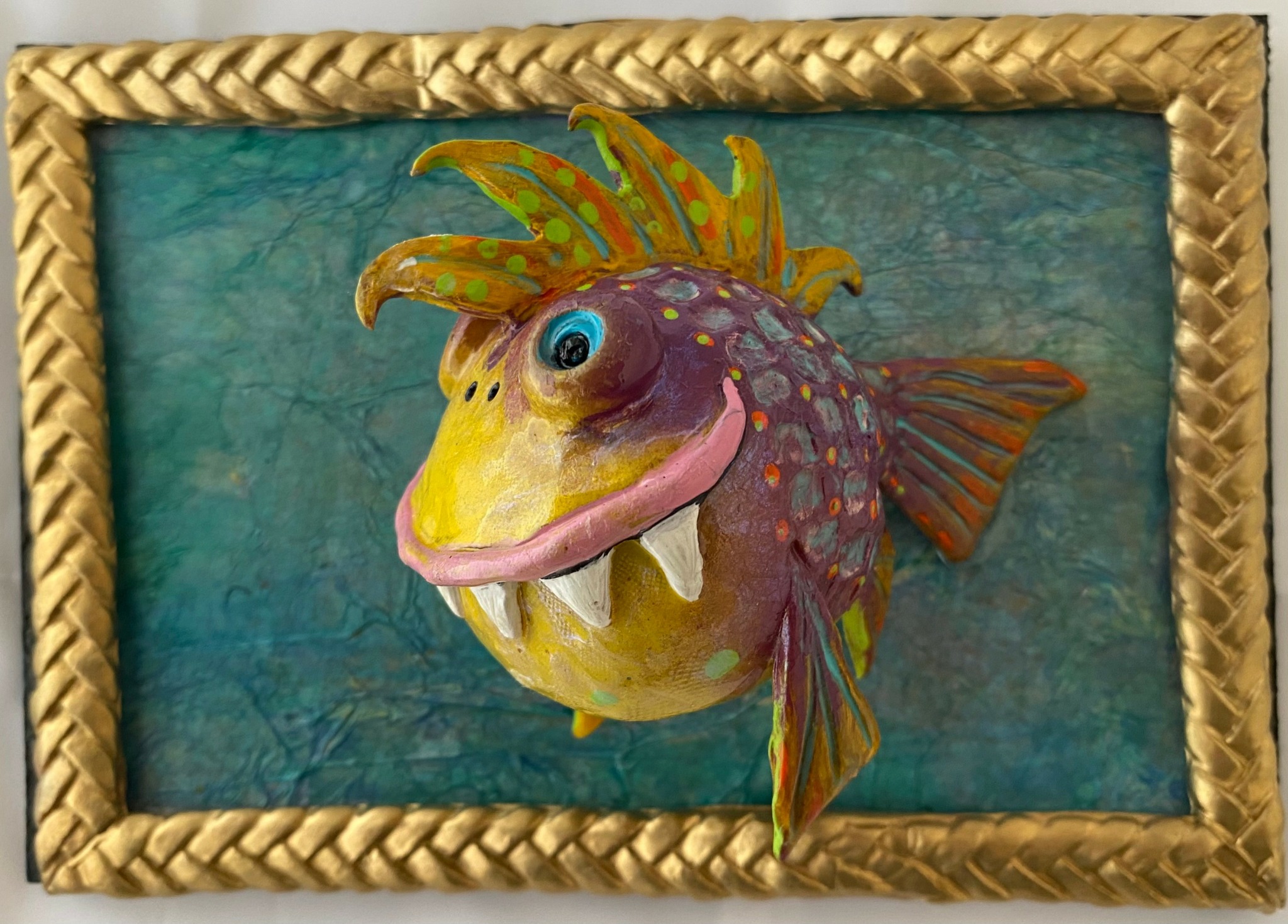We recently connected with Amy Vaclav and have shared our conversation below.
Hi Amy, thanks for joining us today. Learning the craft is often a unique journey from every creative – we’d love to hear about your journey and if knowing what you know now, you would have done anything differently to speed up the learning process.
I’m entirely self-taught, with a lifelong love for animals and nature that started as early as I can remember— constantly observing and drawing little pictures of things I saw in the wild – which also lead me to my degrees in both Biology and Zoology. My art journey really took shape through a mix of curiosity, resourcefulness, and a lot of experimentation. I learned from books early on, and now online tutorials provide those lightbulb moments that keep me growing.
A head injury shifted my path from drawing to sculpting, which challenged me to think in 3D and opened up a whole new way of creating. I began with whatever materials I could find and slowly upgraded my tools as I could afford them. That made a huge difference. Over time, I let go of the idea that self-taught methods weren’t “real art,” thanks in part to kind, encouraging gallery owners.
Learning by doing—diving into each project—has always been the most effective path for me. The most essential skills have been patience, curiosity, and problem-solving, especially when materials or time are limited.
The biggest obstacles? Time and the physical and mental fatigue of juggling a demanding day job with my creative work. But every challenge has helped me sharpen my voice and deepen my passion. It’s an evolving process, and I’m always learning, and relish the challenges.

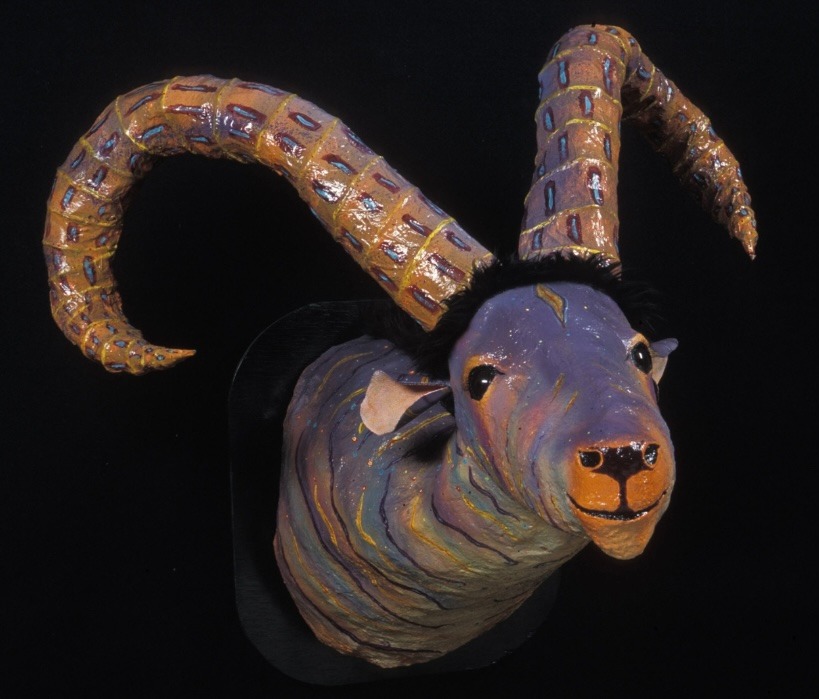
As always, we appreciate you sharing your insights and we’ve got a few more questions for you, but before we get to all of that can you take a minute to introduce yourself and give our readers some of your back background and context?
Amy’s journey as an artist traces an exuberant and ever-wandering line through both wild landscapes and imaginative terrain. Born in Durango, Colorado, and raised across the expanse of the American West, her feral childhood unfurled in the backroads and byways of Wyoming, Utah, and Colorado, most of it spent in a travel trailer that served as both classroom and studio. Influenced by a family where creativity was as natural and necessary as breath—whether in her grandmother’s cooking, her mother’s textile artistry, or her grandfather’s oil paintings—Amy’s destiny to become a maker seemed predestined. Her earliest artistic memories sparkle with illustrated books—her first self-published work memorably centered on “burds” and platypuses—underscoring a theme that endures in her practice today: an irrepressible fascination with the animal kingdom.
She earned college degrees in Biology and Zoology and is a self-taught artist whose technique evolved through fearless experimentation, midnight readings of how-to guides, and countless hours spent happily lost in online tutorials. Her path, characteristically eclectic, includes stints as a National Park Service interpretive ranger, teacher, doggie daycare attendant, taxidermist assistant, and even a spell at a pet nutrition company—each role reflecting her lifelong affinity for animals and the great outdoors.
Animals are the undeniable nucleus of Amy’s work—whether it’s iridescent beetles or noble whales, she captures an ineffable spark, translating her profound knowledge and affection for fauna into vibrant, whimsical sculptures and paintings. Her creations are playful yet soulful, rendering her “critters” not only as they are but as they *want* to be seen: decked in jubilant colors, caught mid-adventure, their inner personalities made visible in streaks of turquoise or splashes of tangerine—what Amy describes as their “auras visible for all to see.”
Among her many creative endeavors, Amy’s ‘Carousel Cat’ stands out as a career highlight. Created for the San Juan Mountains Association’s Pumas on Parade public art initiative, the piece transformed a life-sized fiberglass mountain lion—originally sculpted by Rosetta—into a whimsical yet meaningful work of art. Adorned with an antique Navajo-blanket motif, a carousel pole, equine bridle, and over a thousand hand-placed Swarovski crystals, ‘Carousel Cat’ captivated the public while supporting environmental education—an effort that beautifully reflects Amy’s values and artistic vision.
Amy’s art has brightened walls in multiple galleries along Santa Fe’s Canyon Road, as well as spaces in Colorado, Arizona and New York. Collectors consistently comment on the unvarnished joy and humor radiating from her work – “colorful, hilarious, heart-warming, fun fun fun.” When she’s not sculpting or painting, you’ll find Amy exploring the outdoors, keenly observing the behaviors and beauty of the animals that inspire her most deeply.
Whether as a working artist or in one of her many animal-centered vocations, Amy’s life and art form an inseparable whole, each enriching the other. As she strives toward the dream of being a full-time artist once more, she insists on the fundamental importance of art to society: the stirring of emotion, the fostering of empathy, the reminder that creativity is what keeps us human. In AmyV’s world, art is not simply an object, but an invitation to see—joyfully, and anew—the living spirit in all creatures.
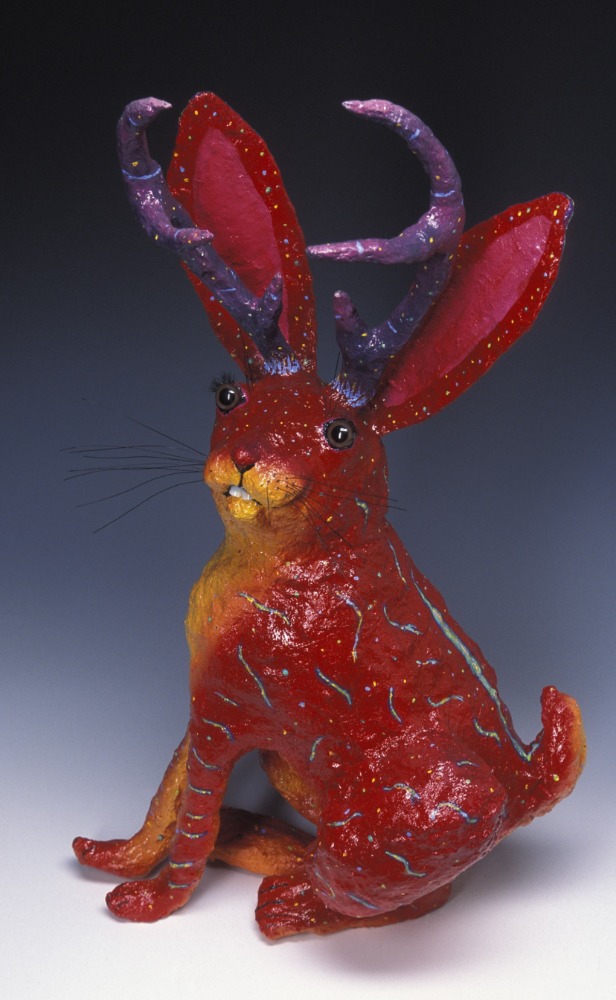
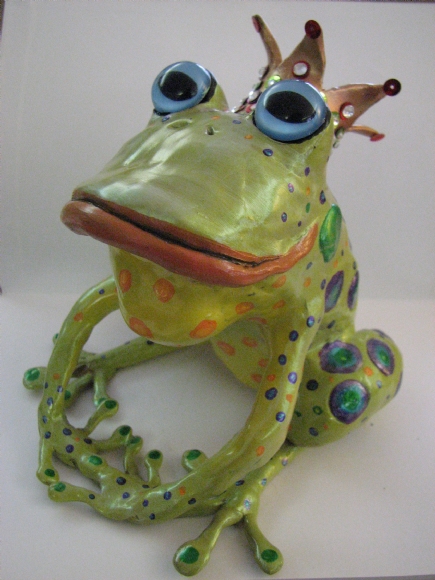
We often hear about learning lessons – but just as important is unlearning lessons. Have you ever had to unlearn a lesson?
There was a short time in my artistic journey when the rejection of my work felt personal and painful—it’s hard to put yourself out on display. My struggle with Rejection Sensitivity Disorder made it especially hard to face the reality that not everyone would embrace my art. I often find it easiest to frame my work within the context of a business proposition, particularly when submitting to galleries and juried shows. If a piece doesn’t fit the overall aesthetic of a show, I chalk it up to “not a good fit for that particular venue.”
One vivid memory stands out from this period. I went to pick up a piece that hadn’t been accepted into a juried show, feeling the familiar mix of disappointment and frustration—when I noticed another artist also retrieving a rejected piece. Unlike me, this artist was devastated by the dismissal, clearly crushed by the decision. Watching their reaction sparked a turning point in my perspective. I realized that, while rejection can hurt, it doesn’t define the value of the work or the artist. It’s just one step in a much longer journey.
I gently picked up my “jury rejected” piece, patted it on its wee head, and took it directly to my local gallery. It was replacing another piece that had recently sold, and to my surprise and delight, this previously rejected artwork sold that very evening. It was a moment of revelation—art, like rescue animals, has the perfect person out there somewhere. Just because a piece doesn’t fit one venue doesn’t mean it won’t find a home elsewhere.
The challenge for me was learning to accept that not everyone would love or “get” my art, and that was okay. This came quickly, but it wasn’t easy. I had to move past the urge to tie my self-worth to others’ opinions and understand that jurors often have to think about the overall aesthetics of a show, meaning not every piece can be a fit. This lesson allowed me to let go of the rejected feeling and embrace the knowledge that if I loved a piece, someone else would too.
After this experience, my creative process changed profoundly. I felt free to create whatever inspired me, without second-guessing if it would be accepted or appreciated by every audience. I moved forward with renewed confidence and enthusiasm, eager to share my work with the world.
The very sad artist I met that day unknowingly helped me more than they would ever know. Their emotional response reminded me to not hang my worth on what others think about my art, and it highlighted the realities of the juried show process. Most importantly, it helped me understand that rejection is rarely personal; it’s often about fit and context.
To anyone facing a similar situation, my advice is simple: 1. Keep on keeping on. 2. Do your research. 3. Make it easy for galleries and jurors by applying only where your art will truly fit. 4. Don’t waste their time or yours by submitting to venues that aren’t a good match. When your work finds the right hands, everyone benefits—you, your galleries, and your collectors who gain pieces that bring them joy. It takes dedication and hard work behind the scenes, but staying true to your art and understanding where it belongs will make all the difference.
This lesson has impacted my life by freeing me creatively and emotionally, enabling me to pursue my work with passion and resilience. It reminded me that art is a journey and that every piece has a home—you just have to find it.
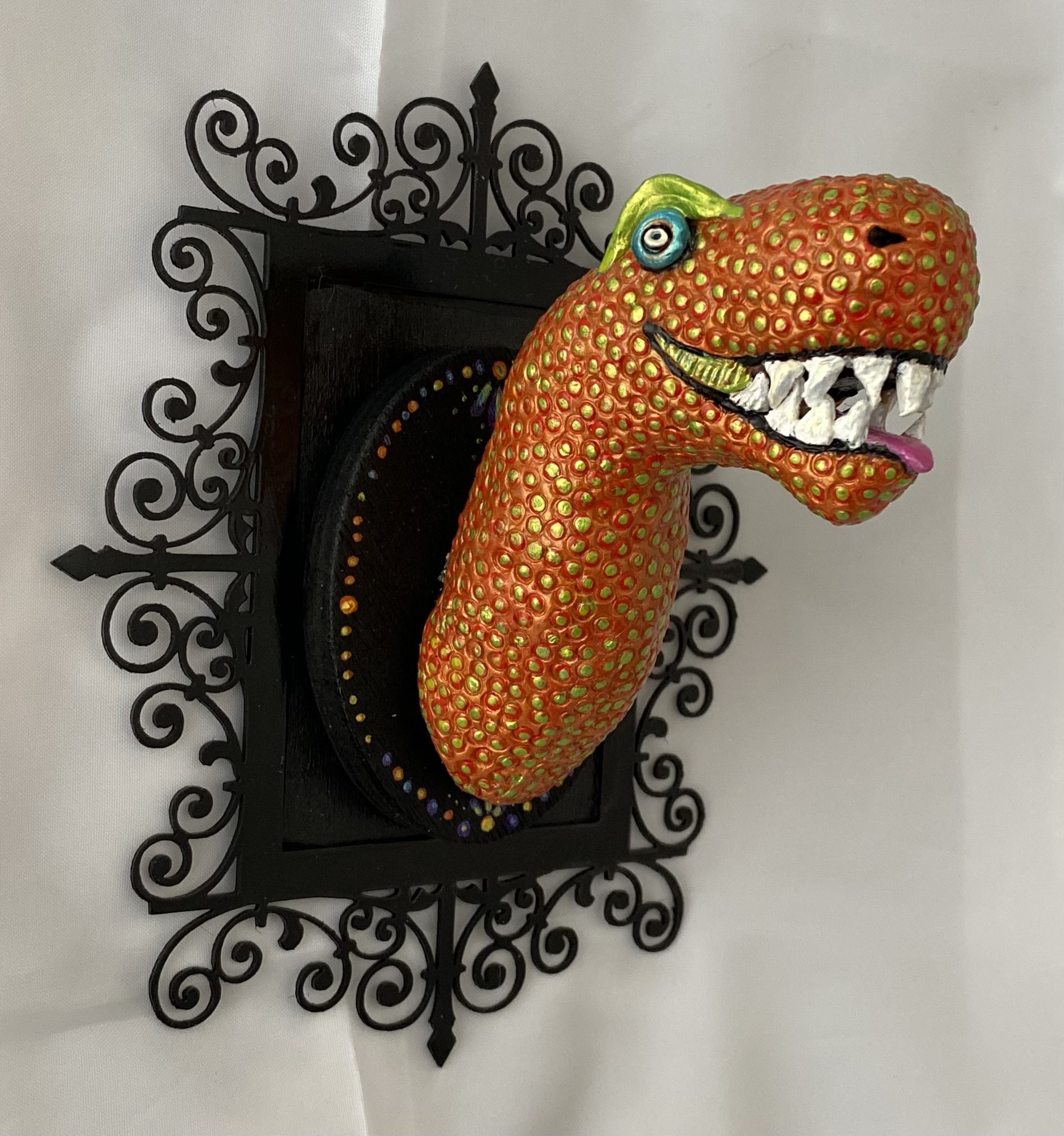
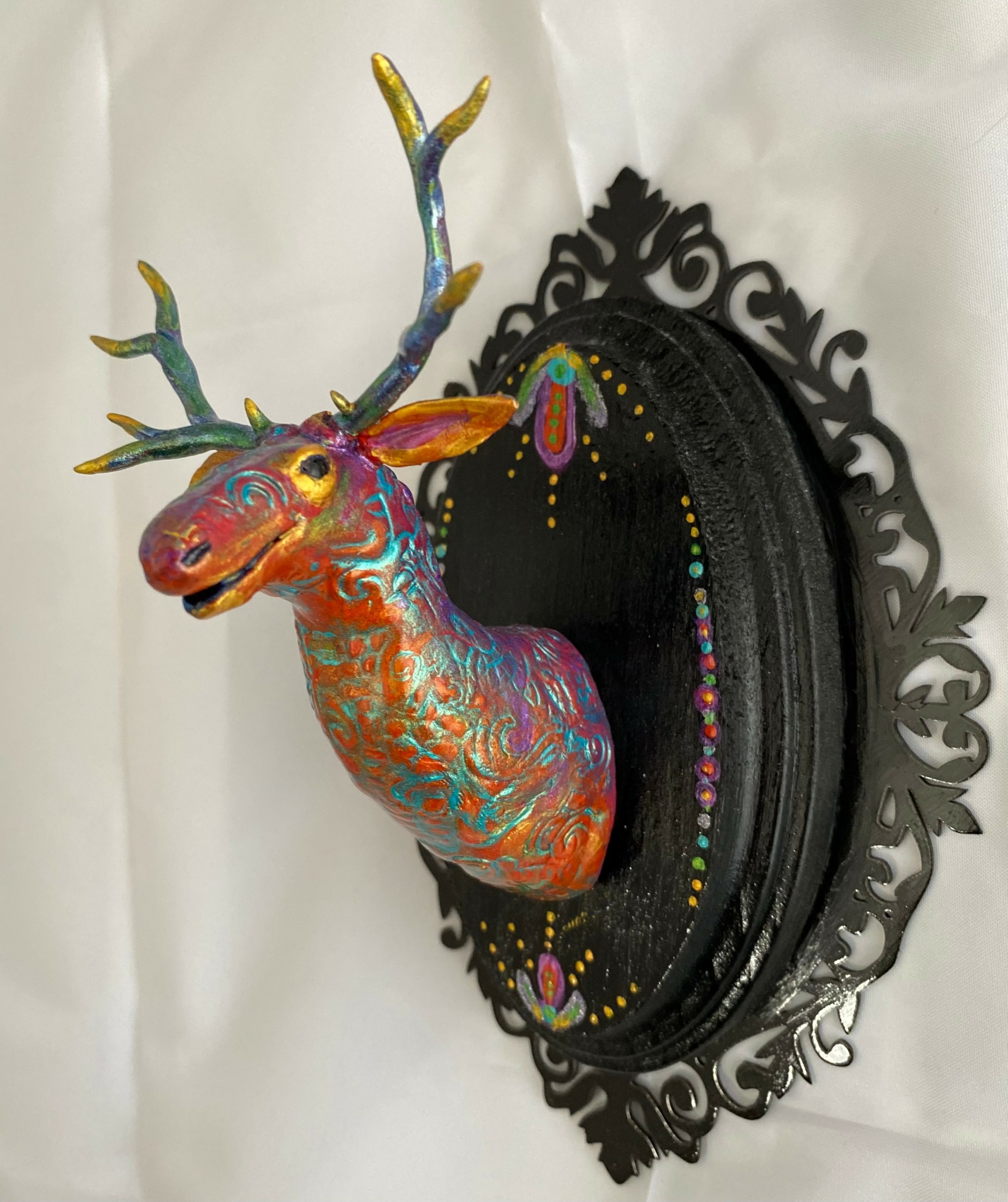
Is there mission driving your creative journey?
My creative mission is driven by a deep curiosity about the natural world and a passion for sharing that understanding through art. With a background in biology and zoology—and time spent living closely with wildlife—I create joyful, vibrant work that celebrates the importance of all living beings. I believe our connection to other creatures is essential to our happiness and that treating all life with care is vital to maintaining ecological balance.
My art speaks to fellow animal lovers, aiming to spark joy and connection. Success, to me, means not only financial sustainability but also expanding my reach through broader gallery representation. I embrace experimentation and take creative risks, continually exploring new mediums and colors to keep my work fresh and engaging.
Authenticity is at the heart of my practice. I focus exclusively on animals that reflect my values and passions, and I’ve found this sincerity resonates with others—striking a meaningful balance between artistic integrity and commercial success. To continue this work, I seek support in the form of digital tools and dedicated time for creation.
Looking ahead, my goal is to share my art with a wider audience, inspire love and respect for the natural world, and leave a lasting legacy of curiosity and care for all living things. Creating and sharing this joy is what I love most.
Contact Info:
- Website: https://www.amyfelker.com
- Instagram: _amyfelker.com_
- Facebook: Amy Vaclav

